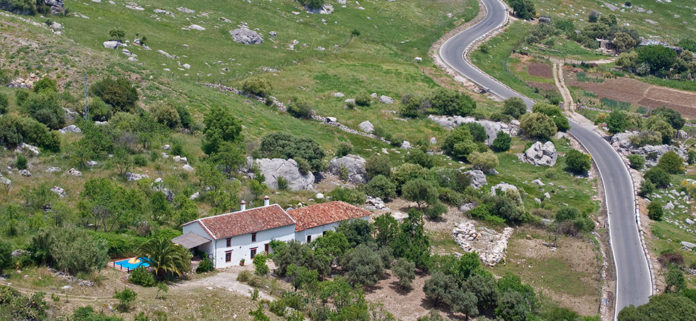
SPAIN’S BATTLE against a severe drop in population in rural areas of the country has taken a new and surprising turn, by offering banking services closer to residents in declining villages and providing childcare at home.
Whilst provincial capital cities and coastal areas tend to be densely-populated, many land-locked regions are suffering from an ongoing loss of inhabitants leading to schools closing and even entire villages becoming empty.
One of the worst-hit provinces is Teruel, southern Aragón, where 80% of the population live in villages of fewer than 30 inhabitants and nearly everyone outside Teruel city – which has barely 30,000 residents – resides in a village of fewer than 300 people.
Such areas often have no infrastructure enjoyed by so many others, such as internet access and limited mobile phone coverage, since telecommunications companies would never recover the cost of their investment in setting up the networks needed – an issue regional governments in affected areas are working hard to address in line with the EU’s requirement for 100% coverage within the next three years.
Spain is home to 8,125 towns, cities and villages, and over 50% of these are at risk of ‘extinction’ due to losing all their residents. Of these, 1,286 have fewer than 100 inhabitants, and 36 provinces in Spain have lost significant numbers of residents in the last year alone.
The decline of rural life, which used to make up two-thirds of Spain’s economy barely 40 years ago, means younger residents have to move away from their home villages to get jobs, typically heading to cities and the coast.
This means few under-populated provinces have any residents of child-bearing age – in a country where the birth-rate has been in freefall for well over 15 years – and as the original inhabitants age and eventually die or move in with younger relatives, villages are literally disappearing.
Spain’s Federation of Municipalities (FEMP) says some of the solution lies in making rural life viable again by providing modern services, infrastructure, mobile and internet coverage and shops, as well as buying up empty homes and selling them on.
Income tax deductions and financial and professional incentives for people choosing to stay in, or move to these areas are other suggestions.
“In some of the worst-hit areas, residents do not even have a cashpoint nearby or anywhere within walking distance to buy a carton of milk,” FEMP says. “And for those with children, the nearest nursery is often over 10 kilometres away.”
Childcare in the family home – in the same way as better-populated towns and villages offer home assistance for the elderly – may help, at least in the medium term, FEMP believes.
An increase of at least 20% in funding for home help for children and the elderly, sick and disabled is necessary to encourage residents to stay put and even move out of towns and into the country, as well as a State financial injection for ‘endangered’ villages, according to FEMP, which is due to hold a conference on the most pressing issues in Huesca, Aragón’s northernmost provincial capital, towards the end of June.
FEMP believes tourism may be another useful tool in providing meaningful and well-paid jobs that prove an incentive to residents to stay in, or move to, parts of the country suffering a population exodus.
As well as Aragón, provinces in Castilla y León and Castilla-La Mancha are among those with the greatest dangers of losing swathes of inhabitants and ending up with a significant portion of their municipalities completely empty within the next 10 or 20 years.








